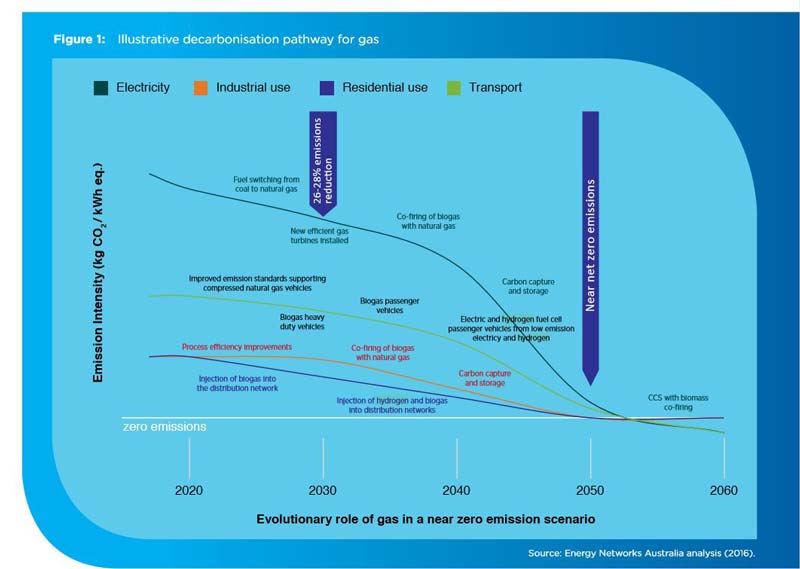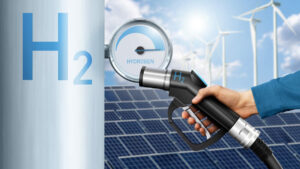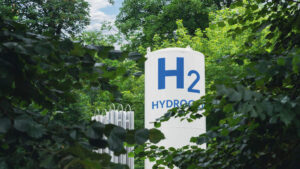Aussie states are burning up with hydrogen fever… and now even cooking with it

ATCO has launched the first hydrogen cooktop in WA (hydrogen burns orange though not blue). Pic: Getty
The Australian federal and state governments are getting more aggressive on the hydrogen front in a bid to encourage greater private investment in the renewable energy source.
Late last week the WA government announced it would commit $10m to a Renewable Hydrogen Fund as part of its new Renewable Hydrogen Strategy to position Western Australia as a “frontrunner in the burgeoning global renewable hydrogen industry”.
WA regional development minister Alannah MacTiernan said hydrogen was a “major opportunity” for the state, but it wouldn’t happen without significant investment and lead times.
“We need to build our domestic hydrogen market and our skills base, to drive the transition for our existing industries and capitalise on this opportunity for WA’s economy, supporting regional jobs and growth,” she said.
And over in Victoria, construction has just started on a half-billion-dollar pilot hydrogen project that the federal government says has the potential to create $2 billion in exports for Australia.
The Hydrogen Energy Supply Chain project at Port Hastings in Victoria will look at the feasibility of turning brown coal from the Latrobe Valley into hydrogen, which would then be liquefied and exported to Japan.
“Australia is well placed to become a global leader in hydrogen production and this pilot project is a crucial step towards making this vision a reality,” federal resources minister Matt Canavan said at Friday’s “sod turning”.
The Australian and Victorian governments committed $50m each to the $500m project, which is also supported by the Japanese government and Japanese industry, with Kawasaki Heavy Industries a partner in the project.
Big market, few Aussie players
The global hydrogen market right now is worth $US130 billion ($184 billion) and the industry is forecast to grow to $US2.5 trillion by 2050, according to Morgan Stanley.
But there is just a lone ASX-listed player forging ahead in hydrogen – Hazer Group (ASX:HZR).
>>WATCH NOW: 90 Seconds With…Geoff Ward, Hazer
Hazer has been working closely with the WA government through the Renewable Hydrogen Council that was formed in October last year.
CEO Geoff Ward said the state government had been proactive in pursuing hydrogen over the past one to two years.
“I think their strategy is well-founded,” he told Stockhead.
“CSIRO did a lot of the groundwork to help ensure that underneath those high-level statements there’s some good solid technical industrial thinking.
“I think that their strategy hits all the right elements. There’s a lot of things in there which are positive for us – they are looking to develop refuelling facilities for hydrogen vehicles. That obviously provides a customer draw that we can look to fill.”
Hazer is working with WA’s Water Corporation to develop a 100-tonne-per-annum, low-emission hydrogen production facility at the Woodman Point wastewater treatment plant south of Perth.
Water Corporation is the state’s #1 supplier of water, wastewater and drainage services.
If built, this would be Hazer’s all-important commercial demonstration plant — proof that the tech can operate cost effectively, day-in day-out, to deliver two quality products in hydrogen and graphite.
READ: Hazer wants a hydrogen plant running by 2023, foreign interest is already lining up
Ward said that government-backed investment funds could potentially encourage interested parties such as transport authorities and private transport operators to consider hydrogen-run vehicles – the end use that is closest to being economic.
“That type of fund can help bring forward those kinds of syndicates and so we’re hoping to obviously be able to supply hydrogen from our demonstration facility into a transport project,” he said.
“So hopefully that type of funding will help stimulate some of those activities.”
Hydrogen cars are already being trialled on the road in parts of Australia, while earlier this year Queensland became the first Australian state to ship 200g of “green” hydrogen.
And Ward said there were signs that investors were starting to want to understand where hydrogen would fit in, the same way that 10-15 years ago they had to learn where renewables fitted in.
Cooking with hydrogen
Also in WA, private gas supplier ATCO this week unveiled its $3.6m Clean Energy Innovation Hub project in Jandakot.
The modular home demonstrates Australia’s first hydrogen cooktop and other hydrogen appliances – using hydrogen from renewable sources.
Energy Networks Australia CEO Andrew Dillon said the hub demonstrated the potential for hydrogen to be produced from photovoltaic solar for use in the home.
“Projects like this demonstrate the potential hydrogen gas has as a clean energy source for our homes, businesses and transport,” he said.
“Enough solar PV has been installed to power the energy requirements of the depot with surplus renewable energy stored in an on-site battery or converted to hydrogen gas for later use.
“The hub also demonstrates how gas-powered air conditioning can be used to provide heating and cooling to the site.”
A significant long-term solution
While hydrogen won’t be a significant contributor to renewable energy generation in the next couple of years, it is expected to play a key part in the next 10 to 30 years.
Energy Networks Australia said in its “Gas Vision 2050” report that new fuels, such as biogas and hydrogen, had the potential to become mainstream and complementary energy solutions that would use existing energy infrastructure.

McKinsey senior export Godart van Gendt forecasts that by 2040 Australia will have a large enough industry to export sizeable quantities of hydrogen.
Hazer’s Ward said hydrogen wouldn’t be a competitor to other renewable energy sources but instead would be used to make them more effective.
“As wind and solar become more prevalent, then hydrogen is one way that we can integrate those low cost, low emission energy sources into the energy system,” he explained.
“You can take any amount of excess of wind or solar, turn it into hydrogen, and then when that wind and solar isn’t available turn that hydrogen back into heat and power.
“Or you can take that hydrogen from where the excess wind and solar generated it and transport it to where there isn’t excess wind and solar.
“Hydrogen allows you to shift renewable energy both in time and geography, and ultimately export renewable energy to places like Japan and Korea that don’t have our resources.
“So the grid will have wind and solar and gas in the future, and it will have hydro and it will have battery storage and it will have hydrogen, and together they provide the dispatchable, reliable low-emission and cheap energy that’s needed to run a high intensity industrial national network.”
UNLOCK INSIGHTS
Discover the untold stories of emerging ASX stocks.
Daily news and expert analysis, it's free to subscribe.
By proceeding, you confirm you understand that we handle personal information in accordance with our Privacy Policy.








